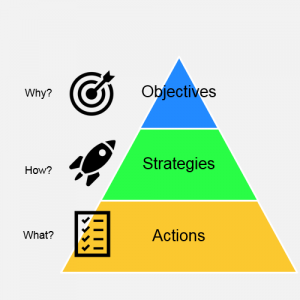Breed Health... What is your vision?
Once again our IPFD friend and collaborator Ian Seath has come out with a thought provoking but practical article.
In BREED HEALTH AT THE START OF A NEW DECADE – WHAT’S YOUR VISION FOR 2030? on the DOG-ED: SOCIAL ENTERPRISE site, Ian does several things:
- Makes it personal - by sharing what he himself is doing - as a breeder, as chair of the Dachshund Breed Council in the UK, as the leader of the Breed-Specific Health Strategies theme at the IPFD International Dog Health Workshops (IDHW).
- In the description of his efforts, he provides great information on the process and structure of building health strategies for any breed, and he shows himself and the Dachshund groups in the UK as role models for other breed clubs. And he credits others who are doing good work.
- He 'walks the walk' (definition: 'to show that something is true by your actions rather than your words'). I know Ian well, and he is not doing this for personal acclaim. He passionately cares about the health and well-being of dogs - all breeds - and he does everything he can to say to all of us - "C'mon... we can do this!!"
- Ian challenges everyone to look ahead to 2030 and to seriously consider how what they are doing will impact the breed over that period.
- And he says: "It’s that time of year when New Year Resolutions have either already been forgotten or are well on the way to become good habits."
 I would encourage everyone to do as he says and to look ahead - not just breed club health committees but individual breeders, judges, veterinarians, researchers, owners... all stakeholders in the dog world. Too often we look to others to take responsibility... too often we give up because we don't see the potential for change (or just think it is too much work).
I would encourage everyone to do as he says and to look ahead - not just breed club health committees but individual breeders, judges, veterinarians, researchers, owners... all stakeholders in the dog world. Too often we look to others to take responsibility... too often we give up because we don't see the potential for change (or just think it is too much work).
And I would also like to stress the mention of good habits. It isn't just about knowing, it is about doing. Saying one thing and doing another is a very bad habit. I will risk offending you by suggesting some examples, all in the spirit of improving the health, well-being and welfare of dogs over the next 10 years.
- Health committees, breeders, individuals say: 'We want healthy, long-lived dogs!'. But do their health programs, recommendations and ACTIONS! truly reflect that goal? If the tendency is to select for the physical characteristics that are being rewarded in the show ring... you are not going to just accidentally get health and longevity... in fact, it's more likely you will get the opposite. Every individual breeder's decisions impact the whole breed!
- In another blog I described an interactive session at the Canadian Kennel Club genetics symposium, where a breeder, after listening to Dr. Kari Ekenstedt and I talk about many issues, including inbreeding, wanted us to specify 'what level of inbreeding was ok?'. In other words, sure, father X daughter was out... but what was okay? I challenged her to consider why she wanted to do inbreeding? Was it because she thought this would improve health and longevity in the breed? Almost undoubtedly it was not - it was to as quickly as possible achieve 'a look'. We all need to think about the big picture.
- Veterinarians - what are you doing within your practice, one on one to stop the normalization of health issues - genetic and otherwise? Do you make clear to your devoted owners of brachycephalic dogs that snorting and snuffling and bug eyes are not 'cute' or 'funny' but serious concerns? Do you work hard to counteract the rampant obesity problem in pets? No, your clients may not want to hear the messages... but what is your personal responsibility?
- Pet industry - are you focusing your marketing to profile healthy dogs... or still using challenged but popular breeds?

So, at IPFD we continue to promote international efforts on the challenges for dogs; we work to bring together stakeholder groups and organizations that can undertake actions and make decisions that can impact the dog world in beneficial ways. But I urge people to read and hear the messages in Ian's article - at both a group and individual level. As he says, echoing the wide focus of the 4th IDHW in Windsor, "The final element in making progress is engagement with breeders, owners and buyers. They are the primary groups whose behaviour needs to be influenced if the plans are to be implemented. There are others to engage with (e.g. vets, KC, researchers, judges) but taking action on both the supply and demand side of the dog population is essential."
I am an impatient person... 10 years is too long to wait for an improvement! But I know how fast it goes. Get going on those good habits for dog health so that when Ian writes another article you can say, with great honesty: 'Yes sir! I am doing my bit!'
 Donate
Donate
0 Comments
Recommended Comments
There are no comments to display.